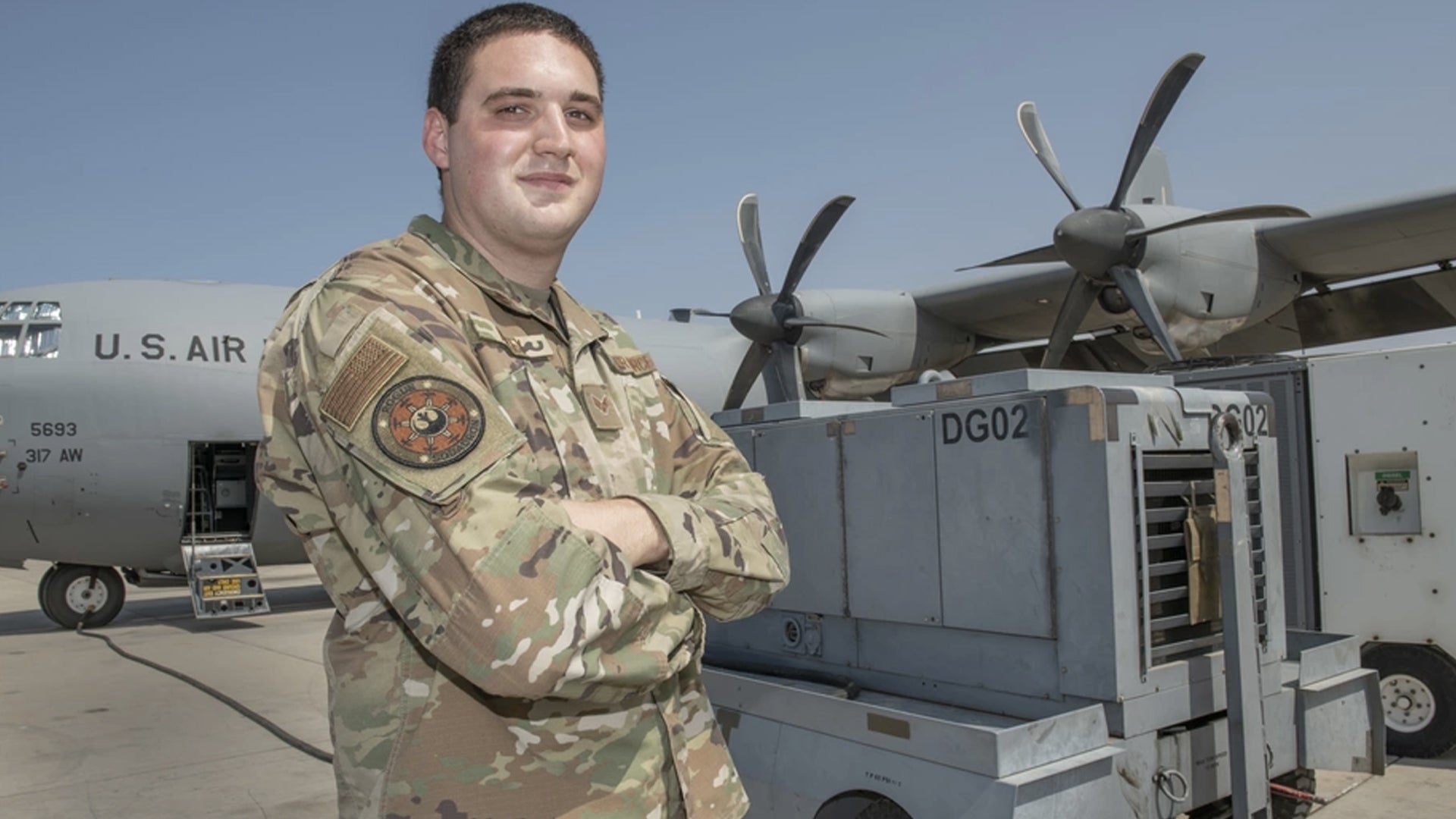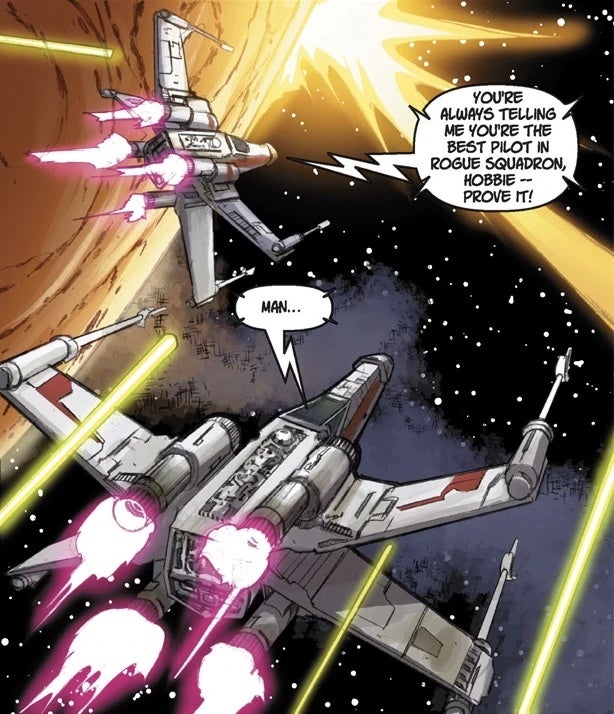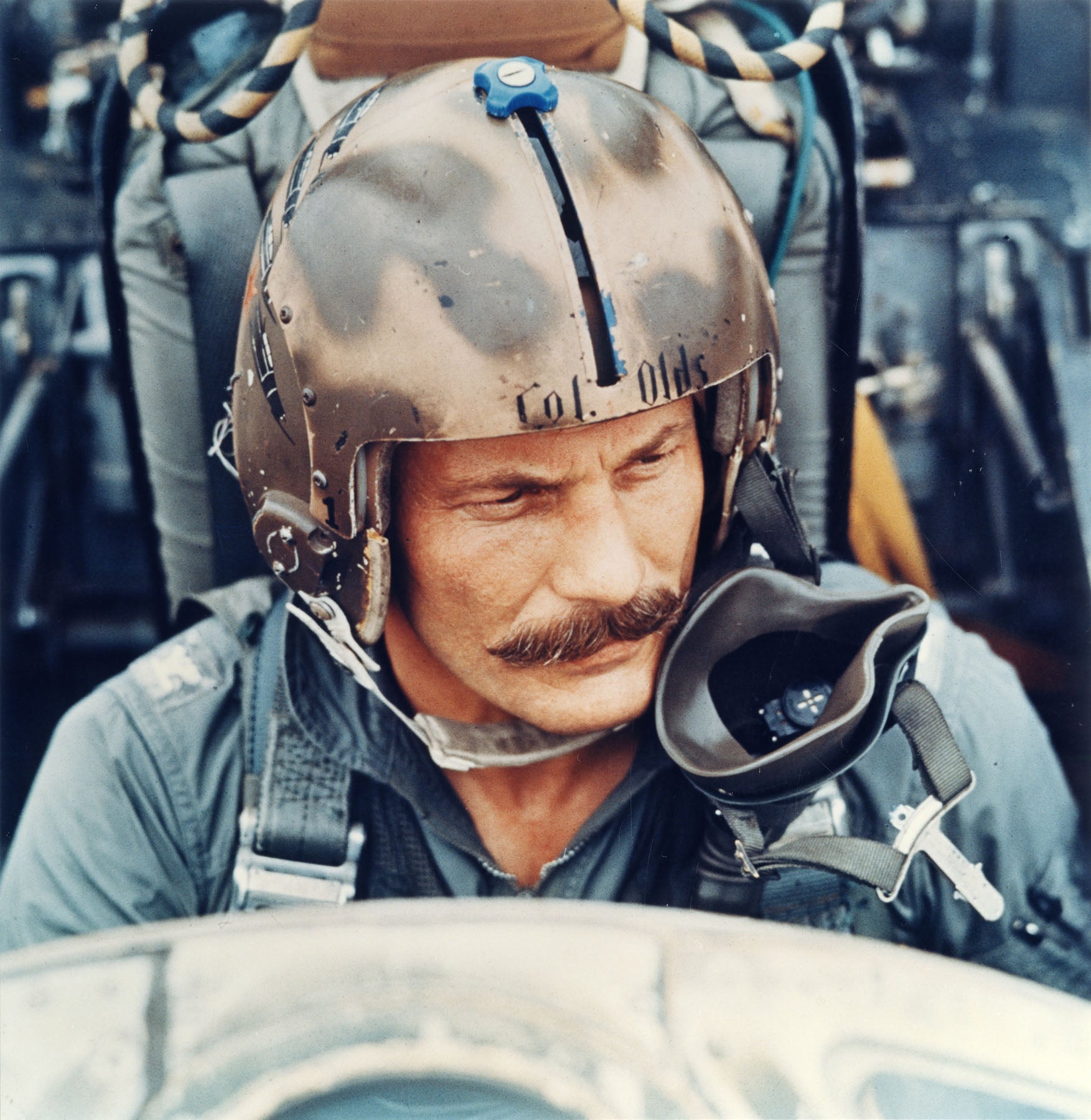May the Fourth, also known as Star Wars Day, may be over, but one Air Force unit seems to be strong with the Force 24/7. The 75th Expeditionary Airlift Squadron flies C-130 transport planes carrying supplies over East Africa for friendly troops in Sudan, Somalia, Djibouti, Ethiopia, Eritrea, Seychelles and Kenya. Its name? Rogue Squadron.
“We are the primary airlift for the Horn of Africa,” said squadron commander Lt. Col. Patrick Sines in a recent Air Force press release. “We are tasked with carrying vital supplies to austere locations. Being able to help those folks down range is a huge reward.”
The legendary Rogue Squadron of the Star Wars universe is made up of a motley crew of hotshot starfighter pilots. While the 75th flies relatively slower cargo planes, the name fits perfectly if you take a closer look.
“Djibouti ain’t too far off from Mos Eisley,” the rough-and-tumble desert city that appears throughout the Star Wars franchise, a C-17 pilot who has experience in the region told Task & Purpose. Likewise, the Star Wars Rogue Squadron often gets assigned the toughest missions, and the Horn of Africa “is a difficult place to operate from an aviation perspective,” he said.

The Horn isn’t just hard on the pilots, it’s tough on the crews who maintain the aircraft.
“In the beginning of the deployment, we had a lot of hard work,” Senior Airman Justin Young, an electrical and environmental specialist with the 75th, said in the press release. “The aircraft were not cooperating with the heat, but we managed to turn that around and get everything fixed.”
What else might the real-life and Star Wars Rogue Squadrons have in common? A motley crew, especially since expeditionary airlift squadrons are often made up of pilots from the Air National Guard and Air Force Reserves, so “they tend to be a ragtag group,” the C-17 pilot said.
Subscribe to Task & Purpose Today. Get the latest in military news, entertainment, and gear in your inbox daily.
To make things even more interesting, many of the airmen of the 75th are on their first deployment. Many of them hail from the 910th Airlift Wing, an Air Force Reserve unit based in Youngstown, Ohio. Camp Lemmonier, Djibouti, where temperatures often exceed 110 degrees, is a far cry from home. But, like their fictional namesake, the airmen of the 75th are there for an important reason. In Star Wars, Rogue Squadron’s mission often involves blowing up Death Stars or breaking Imperial blockades. But in real life, the mission is to give friendly forces the supplies they need to do their job.
“You’ve got to have airlift, especially in this area of responsibility,” said Sines. “Being able to move freely throughout the area through airpower is vital to success. Having boots on the ground is needed, but you have got to be able to resupply those boots.”

The Air Force and the U.S. military in general is chock-full of Star Wars nerds. Military aviators call a canyon in California where they practice low-level passes Star Wars Canyon; an expensive military computing contract, which ultimately failed, was called JEDI; and Andy Marshall, a long serving, highly-respected Pentagon strategist who passed away in 2019, was nicknamed Yoda. One retired Air Force A-10 attack plane pilot remembers relating to Luke Skywalker, the main Star Wars protagonist, while flying through a small canyon near Fort Irwin, California.
“There was some terrain that was just like the Death Star trench run,” said Lt. Col. Gregg Montijo, who saw the first Star Wars movie in theaters while he was attending the Air Force Academy in 1977. “A-10s are so maneuverable that you can go in there and it felt like you were on the Death Star. We’d do that and pretend we were Luke Skywalker.”

Clearly the military has plenty of Star Wars fans, but the 75th squadron may be one of the few U.S. military units to actually take the name “Rogue Squadron.” That’s unusual, considering the Rogues are the most famous group of pilots in the franchise, and the U.S. military has many of the best pilots in the world. Montijo himself could not recall hearing of other Rogue Squadrons, but there could be a good reason for why that is.
“The funny thing about that term ‘Rogue Squadron’ is that when you say someone’s gone rogue it means someone’s gone against regulation or procedure,” he said. In most militaries, calling yourself “rogue” is a good way to put a target on your back.
“Rogue is like ‘we’re the trouble-makers, we’re not going to follow the rules,’” Montijo said. “It’s cool to be associated with Rogue Squadron in the Star Wars sense, but you don’t want to be the ‘Rogue Squadron’ in a wing, which might mean you’re the problem child.”
Even in Star Wars, this holds true. In fact, the reason why the fictional crew of Rogue One chooses that name in the eponymous 2016 movie is because they disobey orders from the Rebel Alliance so that they can go grab the secret Death Star plans.

Like in Star Wars, there are times under duress when going a little rogue has saved lives, Montijo said. For example, in 1967, Air Force F-4 fighter pilot Lt. Col. John Pardo threw the figurative manual out the window so that he could literally push his wingman’s F-4 by the tailhook while both planes were still in the air so that they could make it back to friendly airspace. The Air Force nearly court-martialed Pardo for the loss of the fighter jets, but their wing commander, the legendary Brig. Gen. Robin Olds (a colonel at the time), intervened. A fellow rogue in spirit, Olds (and the robust mustache he grew as a silent “f**k you” to his leadership) is still celebrated in the Air Force every year during Mustache March.
Hopefully the 75th Expeditionary Airlift Squadron out in Djibouti won’t have to break any rules like Pardo or the fictional pilots of Rogue Squadron had to. With a motley crew, a difficult environment, and an important mission set, the real-life Rogue Squadron has earned the name already.
“Aligning the EAS with a legendary band of underdogs who overcome difficult challenges is appropriate in my opinion,” said the C-17 pilot.
The latest on Task & Purpose
Want to write for Task & Purpose? Click here. Or check out the latest stories on our homepage.
